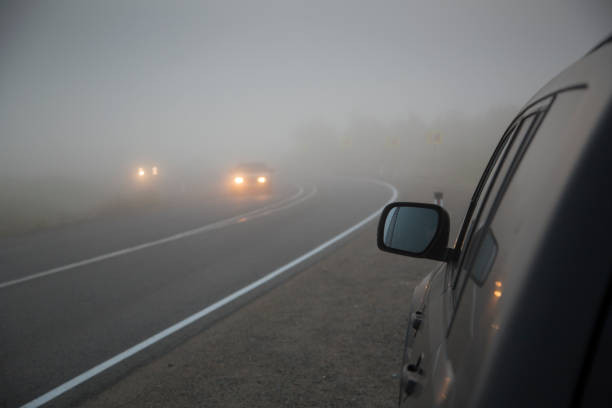Low Visibility Driving Techniques: Staying Safe on the Road
Introduction
Driving in low visibility conditions can be tricky and hazardous. Whether it’s fog, smoke, or a haboob, reduced visibility greatly increases the risk of accidents. Knowing how to navigate these conditions safely is crucial. At Get Drivers Ed, we stress the importance of mastering low visibility driving techniques to keep everyone safe. Here’s a comprehensive guide to driving in fog, smoke, and haboobs.
Driving in Fog
Fog is a common cause of low visibility on the road, often reducing your ability to see to just a few feet, making it extremely difficult to spot other vehicles, road signs, and hazards in your path. This drastic reduction in visibility can significantly increase the risk of accidents, as drivers have less time to react to sudden obstacles or changes in traffic conditions. To navigate safely through fog, it's crucial to slow down, use low beams and fog lights, and maintain a greater following distance from the vehicle in front of you. Additionally, using road markings as a guide can help you stay in your lane when the edges of the road become difficult to see. By adopting these practices, you can enhance your safety and that of others on the road during foggy conditions.
Here are some essential tips for driving in fog:
Slow Down: Reducing your speed is the most important thing you can do. Fog limits your ability to see ahead, so driving slower gives you more time to react to obstacles or sudden changes in traffic.
Use Low Beams and Fog Lights: High beams can reflect off the fog and create glare, making it harder to see. Use your low beams and fog lights if your vehicle has them, as they are designed to cut through fog and improve visibility.
Increase Following Distance: Maintain a safe distance from the vehicle in front of you. This extra space provides more time to react if the car ahead suddenly stops or slows down.
Use Road Markings as a Guide: Keep an eye on road markings to help you stay in your lane. Fog can make it difficult to see the edges of the road, so using the centerline and lane markings as a guide can help you maintain your position.
Driving in Smoke
Smoke from wildfires, agricultural burning, or industrial activity can create hazardous driving conditions similar to fog.
Here are some techniques for driving safely in smoky conditions:
Stay Informed: Check the local news or online resources for updates on smoke conditions before heading out. If possible, avoid driving through areas with heavy smoke.
Keep Windows and Vents Closed: To prevent smoke from entering your vehicle, keep your windows and vents closed. Use the recirculate setting on your air conditioning system to keep smoky air out.
Use Your Lights: As with fog, use your low beams and fog lights to improve visibility. Avoid using high beams as they can worsen visibility by reflecting off the smoke.
Be Prepared to Stop: Smoke can create sudden areas of zero visibility. Be ready to pull over safely and wait for conditions to improve if visibility becomes too poor to continue driving.
Driving in a Haboob
A haboob is an intense dust storm commonly found in arid regions, which can reduce visibility to near zero in seconds.
Here’s how to handle driving in a haboob:
Pull Over Safely: If you see a haboob approaching, the best action is to pull over to a safe location as soon as possible. Turn off the road completely, park your vehicle, and turn off your lights. Keeping your lights on can make other drivers think you are still moving, which is dangerous.
Stay Inside Your Vehicle: Once you have pulled over, stay inside your vehicle with your seatbelt fastened. Haboobs can carry debris that can cause injury if you are outside.
Use Hazard Lights Sparingly: If you must use your hazard lights, use them sparingly. Only use them if you are in a safe spot off the road and want to signal to other drivers that you are stationary.
Conclusion
Driving in low visibility conditions requires extra caution and preparedness. Whether you’re navigating through fog, smoke, or a haboob, following these tips can help you stay safe on the road. At Get Drivers Ed, we provide comprehensive driver education that includes training for all types of driving conditions. By slowing down, using appropriate lighting, and maintaining a safe distance, you can significantly reduce the risks associated with low visibility driving. Being prepared and knowing how to react in these situations is crucial for your safety and the safety of others on the road.
Ready to enhance your driving skills and learn more about handling challenging driving conditions? Enroll in our comprehensive driver education courses today at Get Drivers Ed. Let us help you become a confident and safe driver, no matter the conditions.

